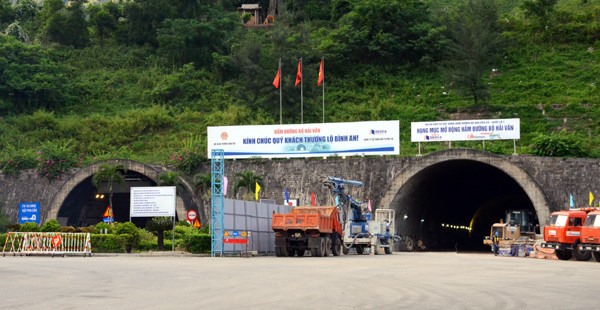 Society
Society

The Hải Vân Tunnel, connecting the two central provinces of Đà Nẵng and Thừa Thiên-Huế, will be closed for 30 minutes per day starting from July 11.
 |
| The entrances of the two tunnels on the Hải Vân Pass connecting Đà Nẵng and Thừa Thiên-Huế Province. The Hải Vân Tunnel 2 (right), running in parallel with the Hải Vân Tunnel 1 (left), will be under construction from July 11. — Photo baodautu.vn |
ĐÀ NẴNG — The Hải Vân Tunnel, connecting Đà Nẵng City and Thừa Thiên-Huế Province, will be closed for 30 minutes every day starting from July 11, said the Ministry of Transport (MoT).
The tunnel will be closed from 1.15pm to 1.45pm every day while construction units use dynamite to create another tunnel that runs parallel to it, called the Hải Vân Tunnel 2, said Đỗ Văn Nam, director of the Đèo Cả Investment Joint Stock Company, the main investor of the project.
Vehicles passing through the tunnel (now referred to as the Hải Vân Tunnel 1) around closing time will be stopped at two toll stations at the north and south of the tunnel.
The closing will be effective within a month from the starting date of construction and applicable on all days except for weekends and holidays.
After one month, the project’s management board and investors will collaborate with concerned units to evaluate the initial construction process of the new tunnel, report it to MoT and ask for permission to carry out mass construction.
The Directorate for Roads of Việt Nam has requested concerned road management departments to collaborate with the project’s management board and investors to direct traffic and announce whether the tunnel is open for travelers.
The Hải Vân Tunnel 2 will be built on the foundation of a 6.2km refuge tunnel. It will consist of four lanes, each 3.5m in width, costing some VNĐ7.3 trillion (US$321 million), and is expected to be completed by the end of 2020. — VNS




